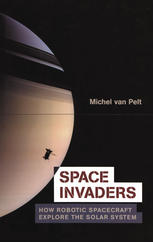

Most ebook files are in PDF format, so you can easily read them using various software such as Foxit Reader or directly on the Google Chrome browser.
Some ebook files are released by publishers in other formats such as .awz, .mobi, .epub, .fb2, etc. You may need to install specific software to read these formats on mobile/PC, such as Calibre.
Please read the tutorial at this link: https://ebookbell.com/faq
We offer FREE conversion to the popular formats you request; however, this may take some time. Therefore, right after payment, please email us, and we will try to provide the service as quickly as possible.
For some exceptional file formats or broken links (if any), please refrain from opening any disputes. Instead, email us first, and we will try to assist within a maximum of 6 hours.
EbookBell Team

4.4
22 reviewsManned space programs attract the most media attention, and it is not hard to understand why-the danger, the heroism, the sheer adventure we as earthbound observers can imagine when humans are involved. But robotic missions deserve a respectful and detailed history and analysis of their own, and this book provides it.
Focusing on future modern spacecraft, Michel van Pelt explains the exciting life of unmanned space explorers, making the technology, design, development, operation and results of modern space probe missions understandable by lay readers.
Instead of describing one specific spacecraft or mission, Michel van Pelt offers a "behind the scenes" look at the life of a space probe: from its first conceptual design to the analysis of the scientific data returned by the spacecraft.
While most popular books on space concentrate on manned spaceflight, this book shows that unmanned space exploration is just as exciting. It demonstrates to the reader just what it takes to send a robotic spacecraft to another planet and what fascinating insight and knowledge we have gained from these probes.
**Offers an insight into the life of a space probe from concept through design to return and analysis of scientific data.
**Explains what it takes to send a robotic space probe to another planet.
**Demonstrates that unmanned space exploration can be as exciting as manned exploration.
**Provides the reader with a view of how the fascinating images and knowledge are obtained from these probes.
**Focuses on modern spacecraft and the future, rather than the history of past projects